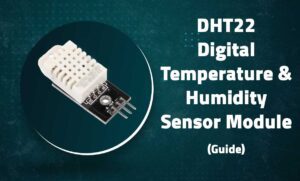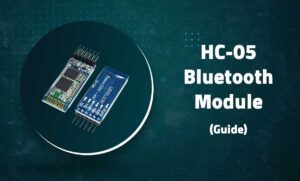nRF24L01 Wireless Transceiver with Arduino Nano

nRF24L01 Wireless Transceiver Module
Reliable 2.4GHz Communication for Arduino Projects
Introduction
The nRF24L01+ is a popular and affordable 2.4GHz wireless transceiver module, widely used in Arduino and embedded electronics projects. Whether you’re building a wireless sensor network, remote control system, or a smart home solution, the nRF24L01 provides a stable and efficient method of communication between microcontrollers.
This module supports multiple data rates, low power operation, and a powerful communication range of up to 1 kilometer when paired with a PA+LNA version and a proper antenna. It communicates via the SPI interface, making it easy to integrate with Arduino boards, ESP32, Raspberry Pi, and other platforms.
Key Features
2.4GHz Operation
Worldwide ISM band compatibility
Low Power
Ultra-low power consumption (12mA during transmission)
126 Channels
Selectable RF channels for multi-device networks
Enhanced ShockBurst™
Automatic packet handling and CRC
Technical Specifications
| Frequency | 2.4GHz ISM Band |
|---|---|
| Range | 100m (standard), 1km (PA+LNA) |
| Data Rate | 250kbps, 1Mbps, 2Mbps |
| Operating Voltage | 1.9V – 3.6V (3.3V recommended) |
| Current (TX) | 12mA at 0dBm output |
Pin Configuration

| Pin | Label | Description | Arduino Connection |
|---|---|---|---|
| 1 | GND | Ground | GND |
| 2 | VCC | Power (3.3V) | 3.3V (⚠️ Not 5V) |
| 3 | CE | Chip Enable | D9 |
| 4 | CSN | Chip Select | D10 (SS pin) |
| 5 | SCK | SPI Clock | D13 |
| 6 | MOSI | SPI Data In | D11 |
| 7 | MISO | SPI Data Out | D12 |
| 8 | IRQ | Interrupt (Optional) | – |
Wiring Diagram (Arduino Nano)
// nRF24L01 Connections: // GND → GND // VCC → 3.3V (via regulator) // CE → D9 // CSN → D10 // SCK → D13 // MOSI → D11 // MISO → D12
Basic Transmitter Code
#include <SPI.h>
#include <nRF24L01.h>
#include <RF24.h>
RF24 radio(9, 10); // CE, CSN
const byte address[6] = "00001";
void setup() {
radio.begin();
radio.openWritingPipe(address);
radio.setPALevel(RF24_PA_MIN);
radio.stopListening();
}
void loop() {
const char text[] = "Hello World";
radio.write(&text, sizeof(text));
delay(1000);
}
Basic Receiver Code
#include <SPI.h>
#include <nRF24L01.h>
#include <RF24.h>
RF24 radio(9, 10); // CE, CSN
const byte address[6] = "00001";
void setup() {
Serial.begin(9600);
radio.begin();
radio.openReadingPipe(0, address);
radio.setPALevel(RF24_PA_MIN);
radio.startListening();
}
void loop() {
if (radio.available()) {
char text[32] = "";
radio.read(&text, sizeof(text));
Serial.println(text);
}
}
Troubleshooting
Module Not Responding
- Verify 3.3V power supply (not 5V)
- Check SPI connections (SCK, MISO, MOSI)
- Confirm CE and CSN pin assignments
Poor Range
- Set higher PA level (RF24_PA_HIGH)
- Add decoupling capacitor (10-100μF)
- Use external antenna version
Data Corruption
- Reduce data rate to 250kbps
- Enable CRC (radio.setCRCLength())
- Check for power supply noise
Conclusion
The nRF24L01+ is a powerhouse in a tiny package. It offers a cost-effective and flexible solution for adding wireless capabilities to your microcontroller projects. With proper wiring and tuning, you can build reliable communication systems for a wide range of applications.
Ready to cut the cord? Start building with nRF24L01 today!





Recent Comments